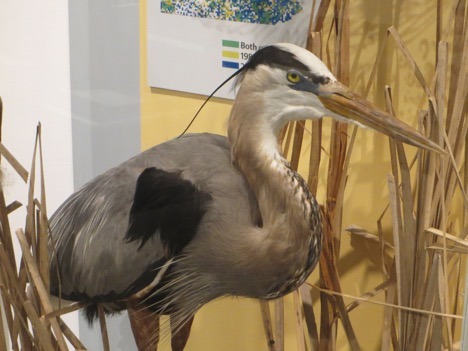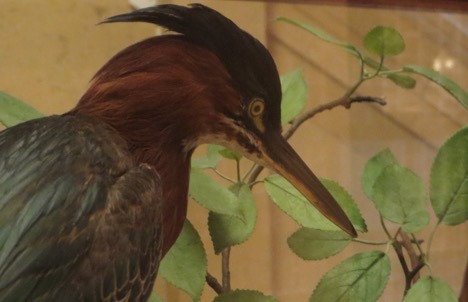by Patrick McShea
Two hundred years after the birth of naturalist Henry David Thoreau, his writing continues to challenge us to be better observers of animals, plants, weather patterns, sounds, and landscapes.
Although the Concord, Massachusetts native would insist that such emulation occur outdoors, selected quotes from his works can add much to our appreciation of details preserved in museum exhibits.

Consider, for example, Thoreau’s precise word-rendering of a subtle shade of color. He described the plumage of a great blue heron’s wing as “a tempered blue as of the sky and dark water commingled.” In Population Impact, museum visitors can verify the accuracy of the poetic description while viewing the great blue heron taxidermy mount displayed in the third-floor exhibition.
A more challenging exercise involves viewing the recently restored, century-old diorama of nesting green herons now displayed at the first-floor level of the Grand Staircase.

In an 1840 journal entry about observing a green heron along a New England river, Thoreau expressed envy for the wading bird’s experience of the world:
“It has looked out from its dull eye for so long, standing on one leg, on moon and stars sparkling through silence and dark, and now what a rich experience is its! What says it of stagnant pools, and reeds, and damp night fogs? It would be worth while to look in the eye which has been open and seeing at such hours and in such solitudes. When I behold that dull yellowish green, I wonder if my own soul is not a bright invisible green. I would fain lay my eye side by side with its and learn of it.”
Patrick McShea works in the Education and Visitor Experience department of Carnegie Museum of Natural History. Museum employees are encouraged to blog about their unique experiences of working at the museum.
